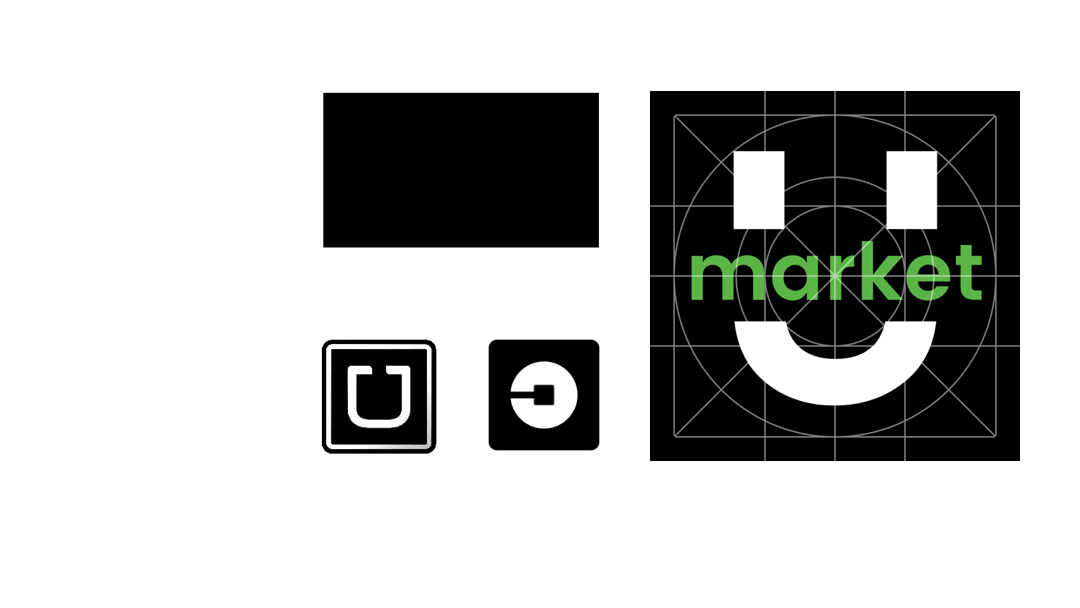
U Market brings the market to you. Helping those living in food deserts to access affordable, high-quality groceries.
Client
Uber Eats
Nov. 2019 — Jan. 2020
Contributions
User Experience
User Interface
Visual Design
Branding
Motion Graphic
Collaborators
Melanie KC
Daniel
Lorraine Yuan
Fangyuan Xu
Scope of Problem
How best to leverage Uber's aggregator and platform technologies to help those living in food deserts access affordable, high-quality groceries?
Visual Design
We kept large parts of the logo similar to Uber's core logo which also invokes lane markers on the road. Similarly, for colors, we kept it similar to Uber Eats to enhance the coherency in branding of related products and thus inculcate a sense of familiarity for the customer.
Brand
Image
The aesthetic we were going for here is down to earth and conveniently familiar. The same association as that of Uber when it launched initially.
Numbers
750,000
New Yorkers live in food deserts.

Research
“The disappearance of urban grocery stores has had the most serious impact on low-income communities, especially those that are predominantly African-American (such East/Central Harlem and North/Central Brooklyn Roosevelt Island).”



We consulted a variety of stakeholders including primary sources and civil society working in food deserts.
-
Food retail operators try to maximize shelf space (~500 square feet)
-
Highly competitive business, price sensitive.
-
Community driven work around food access/nutrition → 6, 7 years of effort → a place to buy healthy food (education/food that is culturally relevant) → Central Brooklyn Food Co-op
-
Shifting the community to buy food from healthy food providers (fresh, local, healthier to residence)
-
Proposing to have a community-owned and operated food provider to focus on the local procedures to the local community
-
A lot of social factors contribute to the existence of food deserts; Being mindful when using the phrase
-
One cause - lack of transportation for farmers to distribute their products to downstream channels
Analysis
There are many players in the vast, complex, and highly competitive, food industry. In the grocery space, the major incumbents are large stores such as ShopRite, Walmart, Kroger's, Stop & Shop, etc. all the way to smaller farmers’ markets. The new entrants are localized services such as Instacart, Amazon Fresh, etc.
Outcome
-
Minimize the traveling cost and maximize the orders we serve
-
Predict orders on-site at the time
-
Increase threshold areas one truck serves
-
-
Balancing between cost control and flexibility offered to our users
-
Reallocate truck assignments based on actual orders and realtime data
-
Leverages Uber's unique strengths of a wide network and realtime mobility, along with the most important factor in the market - price sensitivity. This unique combination will lead to a significant competitive advantage, unlike any other existing players.






















Animation
Tone of U market
Emoji
Logo
Color
Illustration


Mass Market
Economies of Scale
Localized
Expensive
Localized
Economies Scale















